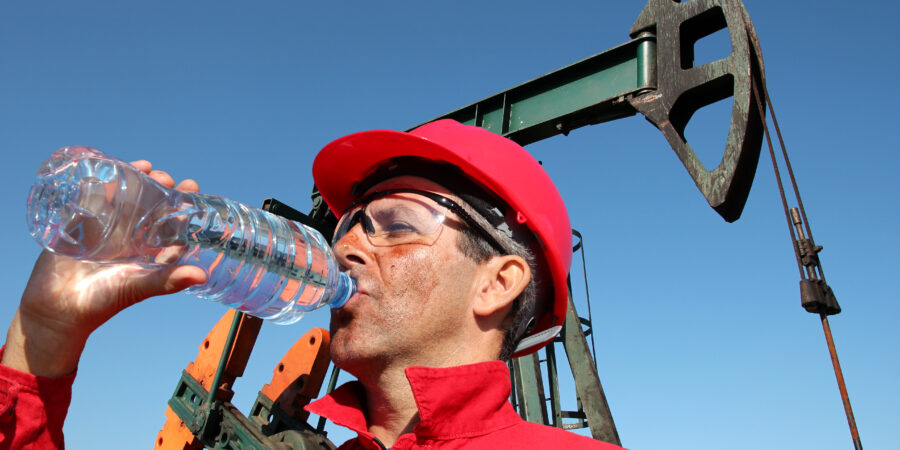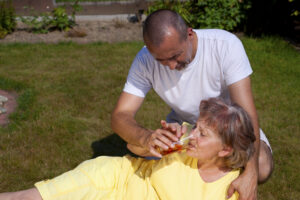How to Prevent Heat Strokes
While many people enjoy basking in warm sunshine on a beautiful summer day, extremely hot temperatures are an increasingly familiar event for many people. When weather conditions are too hot, an individual may become more than uncomfortable. Extreme temperatures can result in serious injury and even death in some cases. The good news is that heat-related conditions can be avoided with proper precautions. What should you know about protecting yourself from heat-related illnesses this summer?
What Are Heat-Related Illnesses?
There are a number of illnesses that you may develop if you are exposed to extreme temperatures or a combination of hot temperatures and high humidity. Heat strokes are undeniably the most serious of these conditions, and they occur when a person’s sweat mechanism fails to sufficiently maintain the body’s temperature at a healthy level. Because the body cannot cool itself down, the person’s temperature may reach up to or greater than 106 degrees Fahrenheit. This is a medical emergency that could result in death or permanent disability.
Heat exhaustion is also a serious condition because it is a sign of dehydration and can lead to heat strokes. With this condition, the body has lost an excessive amount of salt and water through sweating. As a result, the body’s chemistry may fall off-kilter, and serious damage may occur to various systems.
Another condition that could impact you or others nearby on hot summer days is rhabdomyolysis. This is a stress-related condition that is caused by the death of muscle tissue. When tissue dies, proteins and electrolytes enter the bloodstream in large quantities. This can cause an imbalance in body chemistry and could lead to kidney damage, seizures and dangerous heart rhythms.
Syncope, or fainting, may also occur when the body spends too much time in hot temperatures. Fainting may occur because of dehydration or simply because the body has not yet adjusted to the outdoor temperature. It usually occurs when an individual rises to a standing position in hot temperatures. In addition to fainting, muscle cramps and heat rash can develop. Cramps or spasms may commonly be felt in the appendages and abdomen. The rash generally occurs over large sections of the body and may sometimes be itchy.
Concerning Symptoms to Watch For
The symptoms of heat-related illnesses vary slightly, and all signs of a developing health concern should be addressed promptly. For example, if you are having a heat-related stroke, you may have a high body temperature, slurred speech and confusion. A heat-related stroke can also cause a loss of consciousness, dry skin or excessive sweating and even seizures in the affected individual.
The symptoms of heat exhaustion differ. If you are developing this condition, you may notice that you are heavily sweating in hot temperatures. Your body temperature will start to rise. You also may develop decreased urine output, a headache, intense thirst, irritability, nausea and dizziness. Some conditions may result in darker urine, muscle cramps or pain, exercise intolerance, fainting and a rash. The rash will look like small pimples or blisters, and it is most commonly found on the torso, neck, groin, elbow creases and other areas.
In many cases, early warning signs of a developing condition may be overlooked. However, catching the warning signs as soon as possible could make the difference between life and death or serious illness in some instances. With this in mind, it is important that you constantly observe your body’s health status when you are outdoors in extremely hot temperatures. Be aware that children and the elderly may be more susceptible to these conditions because their bodies are not as efficient at self-cooling and self-regulating. In addition, if you are doing any type of labor outdoors, be aware of the health status of others around you. Because exposure to high temperatures can cause confusion and an altered mental state, an individual may not always recognize the signs of a developing illness in his or her body.
Important Tips to Stay Safe
Exposure to high temperatures in the summer months or even indoors in a hot work environment can be dangerous and even fatal in some cases. The good news is that there are multiple steps that you can take to stay safer in hot weather conditions. First, you should always be observant of weather conditions. Be aware that the body manages exposure to wet and dry heat differently. The combination of high temperatures and humidity makes it much more difficult for the body to keep itself cool through sweating. Therefore, when you review the weather forecast, pay attention to both heat and humidity. However, these serious health conditions can also develop when humidity is low.
When you do plan to be outdoors on hot days, dress appropriately. You may want to wear long sleeves and pants to keep sun exposure to a minimum, but choose fabrics that are lighter in weight and coloring. Avoid wearing excess layers. If you start to feel hot, remove your hat, shoes and socks, if possible.
Always plan ahead by bringing ample cool water with you. Because water temperature can increase quickly on a hot day, consider freezing some water bottles the night before. You can also use insulated containers to keep the liquid cool. It may also be wise to bring electrolyte-rich beverages with you. These can help you to maintain an adequate amount of sodium in your body when sweating. Remember to drink frequently. This will help you to cool your body’s temperature from the inside and will keep you from dehydrating.
Whether you plan to do strenuous labor on a hot day or you plan to simply relax under the sun, it is important to take regular breaks. Stay under the shade as much as possible. The temperature in the shade can be significantly cooler on a hot day. In addition, head inside in an air-conditioned space when possible to return your body to a healthy temperature from time to time.
What to Do If You Develop Symptoms
If you or someone you are with shows any potentially serious symptoms, it is important to act quickly. For heat strokes, it is crucial that you contact 911 emergency services as soon as possible. As you wait for help to arrive, relocate the individual to a shaded area and remove his or her top layer of clothing. If possible, apply cool water or a cool cloth to his or her skin. Ice packets may also be applied to help bring the individual’s internal body temperature down. Fan air over the moisture to encourage cooling.
For other heat-related conditions, many of the first aid steps are similar. The individual should be relocated to a cool environment as soon as possible. Physical activity should stop immediately, and the individual should be encouraged to sit or lie still. Cool liquids should be provided, and the individual should take small, frequent sips of water or an electrolyte beverage. In addition, it is important to remove extra layers of clothing and to apply cool compresses to the individual’s head and neck.
Whether the signs of heat strokes have been observed or the individual has fainted, lost consciousness, developed muscle cramps or has any other serious signs of illness, it is crucial to seek medical care as soon as possible.
Have You Been Seriously Impacted by Hot Temperatures?
In some cases, heat strokes and other related conditions are personal injury matters. For example, when these issues develop at work, a worker’s comp case may be filed. A successful case will provide the individual with adequate compensation for medical wages, lost income related to the recovery and more. Do you want to explore the possibility of a personal injury case in more detail? Contact our legal team today to discuss the circumstances in detail with a skilled personal injury attorney.



